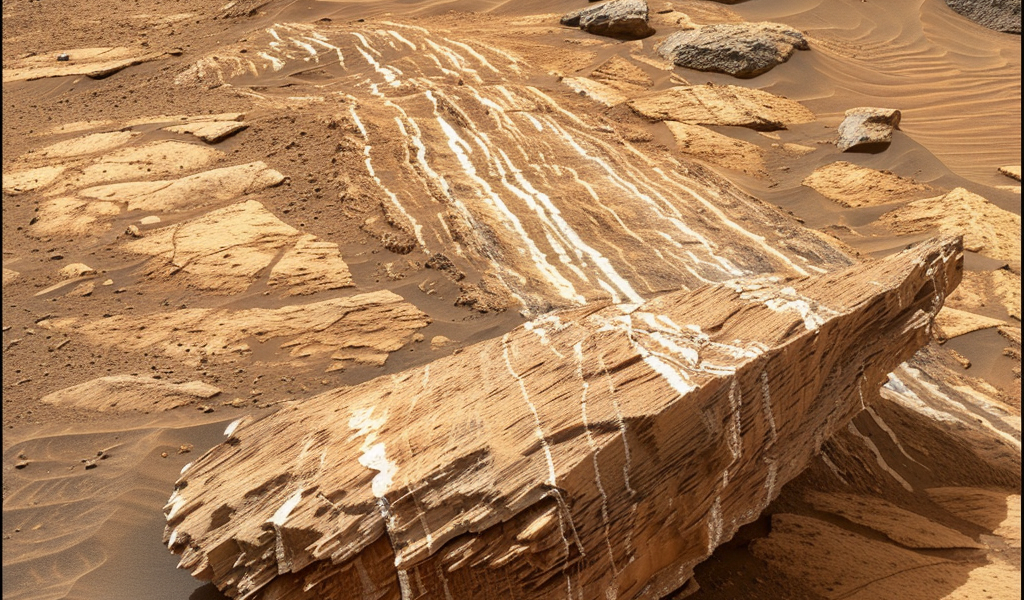NASA’s Perseverance rover has made a significant discovery in its quest to uncover the secrets of Mars, potentially revealing evidence that could suggest ancient life existed on the planet billions of years ago. The rover, which is part of the Mars 2020 mission, encountered a unique geological formation on July 18, 2024, within the Jezero Crater. This formation, a vein-filled red rock nicknamed “Cheyava Falls,” is characterized by its distinctive mottled appearance, resembling leopard spots.
David Flannery, an astrobiologist and member of the Perseverance science team from the Queensland University of Technology, expressed excitement over this unexpected finding. He noted that on Earth, similar features in rocks are often associated with fossilized records of microbial life found in subsurface environments. This discovery could be a crucial step in understanding whether Mars had conditions suitable for life in its ancient past.
While the research surrounding this rock is still in its early stages, scientists at NASA have yet to confirm the exact processes that led to its formation. Further analysis will be required, which can only be conducted once samples are returned to Earth. The arrowhead-shaped specimen has the potential to provide insights into whether Mars was once a habitable environment.
Briony Horgan, a co-investigator on the Perseverance mission and a professor of planetary science at Purdue University, shared her enthusiasm regarding the discovery. She highlighted that this rock is precisely the type of sample the mission was designed to find. Horgan stated, “We’re absolutely thrilled to have this sample in the bag! This is exactly the type of potential microbial biosignature that was envisioned when NASA designed the Mars 2020 mission. We’ve utilized every instrument in our payload to find and understand this rock.”
The rock’s intriguing features are not just visually striking; they also tell a story of the planet’s watery past. The presence of white veins of calcium sulfate provides compelling evidence that liquid water once flowed through the rock, a critical element for the existence of life as we know it. The rover employed its advanced Scanning Habitable Environments with Raman & Luminescence for Organics & Chemicals (SHERLOC) instrument to detect organic carbon-based molecules within the geological structure.
Additionally, the irregular leopard spots were analyzed using the Planetary Instrument for X-ray Lithochemistry (PIXL), which identified the presence of iron and phosphate within these features. Morgan Cable, a research scientist involved in the mission, emphasized the importance of these findings in the broader context of Mars exploration.
As the Perseverance rover continues its exploration of Mars, it aims to collect samples that could ultimately be returned to Earth for more detailed analysis. This mission is not only about searching for signs of ancient life but also about understanding the planet’s geology and climate history. The insights gained from the Cheyava Falls rock could play a vital role in piecing together Mars’ past and determining whether it could have supported life.
The discovery of the leopard spot rock adds to the growing body of evidence that Mars was once a much wetter planet. Scientists believe that understanding the planet’s past environments will help inform future missions, including potential human exploration. The Perseverance rover is equipped with a suite of scientific instruments designed to analyze the Martian surface, and every finding contributes to our understanding of the planet’s potential for life.
In summary, the Perseverance rover’s latest discovery of the Cheyava Falls rock is a promising development in the ongoing exploration of Mars. As scientists continue to study this and other samples collected by the rover, the hope remains that they will uncover definitive evidence of past life on the red planet.





